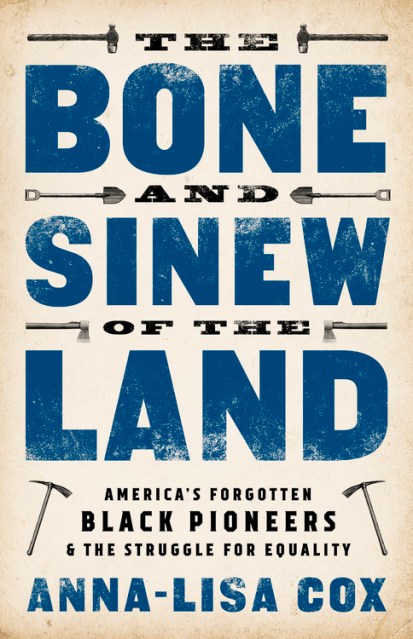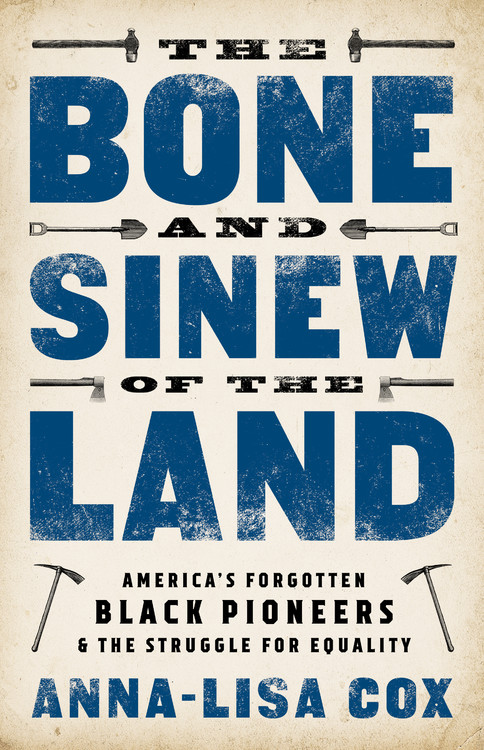Promotion
Use code BEST25 for 25% off storewide. Make sure to order by 11:59am, 12/12 for holiday delivery!
By clicking “Accept,” you agree to the use of cookies and similar technologies on your device as set forth in our Cookie Policy and our Privacy Policy. Please note that certain cookies are essential for this website to function properly and do not require user consent to be deployed.
The Bone and Sinew of the Land
America's Forgotten Black Pioneers and the Struggle for Equality
Contributors
Formats and Prices
- On Sale
- Jun 12, 2018
- Page Count
- 304 pages
- Publisher
- PublicAffairs
- ISBN-13
- 9781610398107
Price
$28.00Price
$36.50 CADFormat
Format:
- Hardcover $28.00 $36.50 CAD
- ebook $16.99 $21.99 CAD
This item is a preorder. Your payment method will be charged immediately, and the product is expected to ship on or around June 12, 2018. This date is subject to change due to shipping delays beyond our control.
Buy from Other Retailers:
When black settlers Keziah and Charles Grier started clearing their frontier land in 1818, they couldn’t know that they were part of the nation’s earliest struggle for equality; they were just looking to build a better life. But within a few years, the Griers would become early Underground Railroad conductors, joining with fellow pioneers and other allies to confront the growing tyranny of bondage and injustice.
The Bone and Sinew of the Land tells the Griers’ story and the stories of many others like them: the lost history of the nation’s first Great Migration. In building hundreds of settlements on the frontier, these black pioneers were making a stand for equality and freedom. Their new home, the Northwest Territory — the wild region that would become present-day Ohio, Illinois, Indiana, Michigan, and Wisconsin — was the first territory to ban slavery and have equal voting rights for all men. Though forgotten today, in their own time the successes of these pioneers made them the targets of racist backlash. Political and even armed battles soon ensued, tearing apart families and communities long before the Civil War. This groundbreaking work of research reveals America’s forgotten frontier, where these settlers were inspired by the belief that all men are created equal and a brighter future was possible.
Named one of Smithsonian’s Best History Books of 2018
-
"Tracing the free black families who settled the nation's first frontier, the great Northwest Territory, Anna-Lisa Cox convincingly shows that African American history has always been interwoven with the pioneer experience in America. At the same time, she reveals the blurred, often dangerous lines between freedom and bondage even in the territories that the Founding Fathers established from the beginning to be beyond the reach of America's original sin: slavery. In introducing us to the Grier and Lyle families, among others for whom land was the dream, Cox uncovers a rich history that may surprise even those most devoted to the study of African American history. The Bone and Sinew of the Land is a revelation of primary historical research that is written with the beauty and empathic powers of a novel."Henry Louis Gates, Jr., Harvard University
-
"The journey of America's Black pioneers is a story that remains unknown to Americans like the frontiers they settled. Starting in the earliest days of the republic, these brave men and women built new lives far away from the White enslavers who doubted them, threatened them, and attacked them. This groundbreaking work of research is a beautifully written testament to their bold courage, to their trailblazing strength."Ibram X. Kendi, New York Times bestselling authorof Stamped from the Beginning
-
"Through ingenious research and a generous sensibility, Anna-Lisa Cox captures the hidden stories of African American farmers who fought for equality and justice against virulent white supremacy. Her heartfelt, lyrical narrative brings the bones and sinews of black frontier families back to life, showing how their idealistic struggles helped to shape the Midwest, and the nation."Peter H. Wood, author of Black Majority and Strange New Land
-
"The Bone and Sinew of the Land unearths and shines a light on a crucial but untold African American and American history that parallels and complicates the well-known story of the Underground Railroad. Cox convincingly reframes the symbolic importance of American pioneers by proving how free black families and communities were shaping their own destinies in America's first frontier of the nineteenth century. Free black people were creating and framing their own destinies across a wide geography through a deep connection to land ownership and politics. This work will not only influence scholarship. It should also deeply shape public history and public conversations from local historic houses to sites to national institutions."Paul Gardullo, curator, Smithsonian National Museum of African American History andCulture
-
"In this engrossing narrative, historian Cox restores attention to the role of African-Americans in shaping both the frontier and early- to mid-19th-century American political life... Cox's book tells a story worth recovering, and it will interest anyone wanting to learn more about the lives of free black Americans before the Civil War."Publishers Weekly
-
"Recent scholarship on the history of slavery, white supremacy, and domestic terrorism has expanded well beyond the bounds of the South, and Cox has made an excellent contribution with her latest book... A must-read for gaining a deeper understanding of the history of racism in the Midwest, particularly present-day Ohio, Indiana, Illinois, Michigan, and Wisconsin."Library Journal
-
"Cox provides a moving and necessary corrective to American pioneer history."Booklist
-
"The Bone and Sinew of the Land explores how black settlers, many of them slaves who had bought their freedom, settled in what is now the Midwest and established thriving farm communities that were threatened by violence and injustice."Columbus Dispatch
-
"Today, evidence of the pioneering African-American presence exists only here and there in place names, still-functioning churches and local lore. The Bone and Sinew of the Land takes a step toward remembering it."BookPage
-
"The Bone and Sinew of the Landis a valuable contribution toward understanding the complex history of race in America."Shepherd Express
Newsletter Signup
By clicking ‘Sign Up,’ I acknowledge that I have read and agree to Hachette Book Group’s Privacy Policy and Terms of Use







